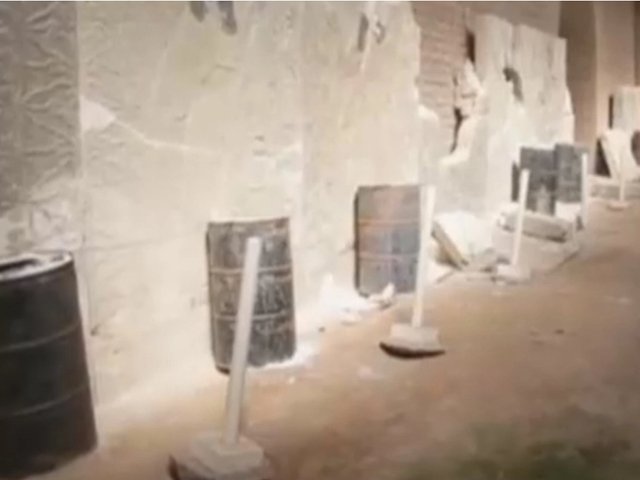London
Although Agatha Christie is renowned as the world’s most successful crime writer, she is much less known for her archaeological interests. Throughout her life, she accompanied her husband, distinguished archaeologist Sir Max Mallowan, on his digs in Iraq and Syria. A fascinating exhibition has uncovered the story of the other side of the crime writer’s life. “Agatha Christie and the Orient: criminology and Archaeology” is currently in Vienna, before going on to Basel, Berlin and London.
The tale begins in 1930, when Christie set off alone to discover the ancient sites of Iraq. An intrepid traveller, she took the Orient Express to Constantinople, changed onto the Taurus Express for Damascus and then switched over to a luxurious saloon bus for the two-day journey across the desert to Baghdad. There she went on by train to the Mesopotamian city of Ur, where she visited the excavation and first met the young Max Mallowan. It was love at first sight, but Max was fourteen years younger, and Agatha was initially hesitant when he proposed. Legend has it that she finally agreed, pointing out: “An archaeologist is the best husband any woman can have. The older she gets, the more interested he is in her.” (Christie eventually died in 1976, aged eighty-five, followed by Max two years later.)
Agatha accompanied Max on every excavation, which took them many times to Nineveh, Tell Arpachiyah, Chagar Bazar, Tell Brak and Nimrud. She worked with him, helping to catalogue and conserve the finds, and doing the photography. According to curator Dr Charlotte Trümpler, “Their analogous way of working explains why Agatha was so fascinated by archaeology and why her marriage with Max resulted in such a fruitful alliance.”
Christie was particularly interested in the everyday life of the ancient civilisations, rather than the political history of the kings. She was delighted, for instance, when an ancient tombstone for a guard-dog was uncovered at Nimrud. The canine tomb was inscribed with the words, “Don’t stop to think, bite him!”
Some of Christie’s most successful novels were based directly on the archaeological digs (Murder in Mesopotamia, Appointment with Death and Death Comes as the End), while others reflected her travels to the East (Death on the Nile and Murder of the Orient Express). At one point, in Death on the Nile, detective Hercule Poirot explicitly compares his method of detection to the archaeological approach to uncovering the truth: “You take away the loose earth, and you scrape here and there with a knife until your object is there, all alone, ready to be drawn and photographed with no extraneous matter confusing it. That is what I have been seeking to do—clear away the extraneous matter so that we can see the truth.” Poirot then went on to identify the murderer.
The exhibition “Agatha Christie and the Orient: criminology and archaeology” includes archaeological objects excavated by Mallowan, with over 200 loans from the British Museum. Equally important, it deals with Christie’s travels and writings, with photographs, books and memorabilia, much of it lent by the descendants of Christie and Mallowan. Also included is a previously unshown colour film, shot by Christie in 1938 on the dig at Tell Brak. After opening at the Ruhrlandmuseum in Essen, the exhibition is at the Museum für Völkerkunde in Vienna (until 17 September), before going on to the Antikenmuseum in Basel (29 October-1 April 2001), the Vorderasiatisches Museum in Berlin (15 May-30 September 2001) and the British Museum (November 2001-March 2002).
Originally appeared in the Art Newspaper as 'Adventures on the Nile'



